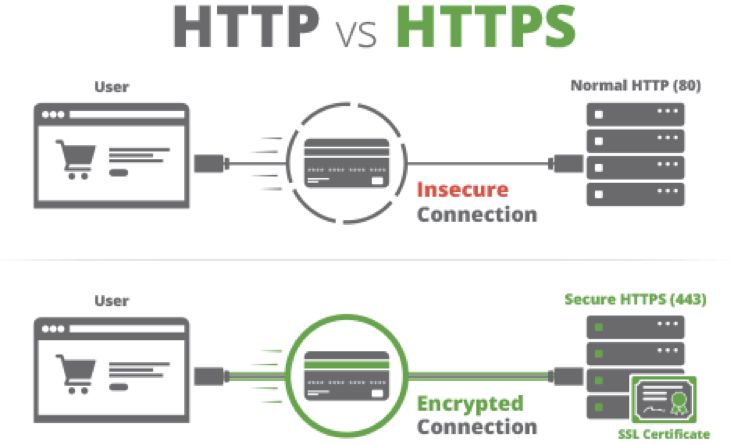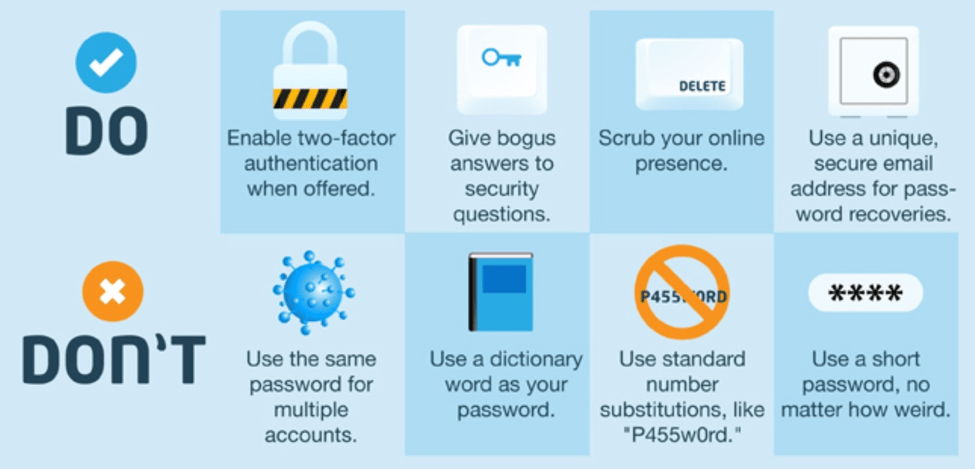No business owner thinks that their website will be hacked. But, in today’s tumultuous online landscape, it’s more important than ever to ensure that your website is designed with security in mind. As the number of threats and vulnerabilities continues to increase, a growing number of companies have found themselves in the crosshairs of an online hacker.
Did you know that on average around 30,000 websites are hacked each day? Designing a website that looks nice and is user friendly is important, but it’s even more critical that the website you provide is secure.
Here’s how to design a secure website that properly protects company and consumer data.
Use HTTPS
Contents

Most web users are well aware to look for an https connection when providing sensitive information to a company’s website. Using HTTPS is especially important if you run an online store and will be collecting personal customer data like name, credit card information, and address.
To use HTTPS hosting, your website must have a valid SSL certificate. This allows a secure encrypted connection to be made between the user’s browser and your website. With HTTPS, there’s virtually no risk that the connection can be intercepted by a hacker.
There are many companies that offer free and entirely automated certificates, making the process of implementing HTTPS much less complex.
Security aside, Google has also stated that websites that use HTTPS connections rank higher in their search engine page results. So knock out two birds with one stone and make the switch to HTTPS.
Use Strong Passwords
This may be a no-brainer, but there is still a large number of people who continue to use guessable passwords. Consider the fact that in 2016, some of the most popular passwords included “passw0rd” and “123456.”

Hackers today have access to a variety of password cracking tools that can be used to brute force simple passwords. As a website owner, it’s important that all of your administrative passwords are complex. Ensure they include a mix of upper and lowercase letters, numbers, and special characters.
But complex passwords are only half of the equation. It’s also pertinent that these passwords are updated on a routine basis and that you do not duplicate passwords. Never use the same or similar passwords on your website as those you use for personal applications.
Use Layers of Security
The more layers of security your website has, the more protected it will be. Your first line of defense should be a firewall. A web application firewall is designed to look at incoming traffic and to block malicious requests. This protects your website against a variety of attacks including:
- Brute force attacks
- Denial of service attacks
- SQL injection
- Cross site scripting
Today you’ll find that there are cloud-based application firewalls. In the past, running a firewall required hardware, like a server. A cloud-based solution is much more cost efficient, mobile, and scalable.
Aside from a firewall, it’s also beneficial to invest in a web application vulnerability scanner. These tools are designed to search your site to find any known vulnerabilities that may have been overlooked.
Keep Things Up-to-Date
It’s not uncommon for developers to use scripts and other open source software when designing a website. These tools are prized for their availability and accessibility, which has its perks but also its pitfalls. A good-intended web developer can use them to meet a complex web need quite easily. But, a malicious user can also exploit these tools, finding security vulnerabilities and using them to take control of your website.
If you’re using WordPress backup plugins, security plugins, or third party software to track visitor metrics, be sure that everything built into your website is kept up-to-date. This minimizes the risk of a hacker finding and exploiting a hole.
It takes just a few minutes to ensure you’re up-to-date, time that is well worth the prevention of a website attack!
Rename Admin Directions
Using a script, a hacker can scan all of your website’s directories, allowing them to easily locate those that are for admin functions. If you have directories named admin or login, take a few seconds and rename them! Many of today’s top content management services allow users to rename these folders.
Use innocent names that don’t scream “hack me!”
As an added bonus, when you’re changing directory names, ensure your permissions are properly set. You want to avoid giving hackers a shoe in into your website by giving read or write access to anyone outside of the webmaster group.
Conclusion
Running an unsecure website is a huge threat. Not only do you risk the loss of personal consumer data, you also risk a huge impact to your company’s brand, not to mention the cost of recovering from a hack or data breach. Use these tips to help secure your site and protect your customers from cyber security threats.
Was this article helpful and informative? Leave us a comment with your thoughts in the section below.


